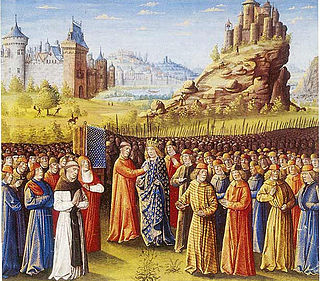
Year 1146 (MCXLVI) was a common year starting on Tuesday of the Julian calendar.

Edward the Confessor was one of the last Anglo-Saxon English kings. Usually considered the last king of the House of Wessex, he ruled from 1042 to 1066.

Gerald of Wales was a Cambro-Norman archdeacon of Brecon and historian. As a royal clerk to the king and two archbishops, he travelled widely and wrote extensively. He studied and taught in France and visited Rome several times, meeting the Pope. He was nominated for several bishoprics but turned them down in the hope of becoming Bishop of St Davids, but was unsuccessful despite considerable support. His final post was as Archdeacon of Brecon, from which he retired to academic study for the remainder of his life. Much of his writing survives.

John's First Expedition to Ireland refers to a visit to the Island of Ireland by John Plantagenet as part of a campaign to secure the influence of the House of Plantaganet and the Crown of England, who planned to set up a Kingdom of Ireland within the Angevin Empire. John was himself a future King of England, the son of Henry II of England and had been declared Lord of Ireland by his father at the Council of Oxford in 1177. Despite his own ambitions for the Kingdom of Jerusalem, John Lackland was sent west to Ireland by his father and landed at Waterford in April 1185.
Thomas II was a medieval archbishop of York.
The Kingdom of Alba was the Kingdom of Scotland between the deaths of Donald II in 900 and of Alexander III in 1286, which then led indirectly to the Scottish Wars of Independence. The name is one of convenience, as throughout this period the elite and populace of the Kingdom were predominantly Pictish-Gaels or later Pictish-Gaels and Scoto-Norman, and differs markedly from the period of the House of Stuart, in which the elite of the kingdom were speakers of Middle English, which later evolved and came to be called Lowland Scots. There is no precise Gaelic equivalent for the English terminology "Kingdom of Alba", as the Gaelic term Rìoghachd na h-Alba means 'Kingdom of Scotland'. English-speaking scholars adapted the Gaelic name for Scotland to apply to a particular political period in Scottish history during the High Middle Ages.
Robert of Scone was a 12th-century bishop of Cell Rígmonaid. Robert's exact origins are unclear. He was an Augustinian canon at the Priory of St. Oswalds, at Nostell. His French name indicates a Norman rather than an Anglo-Saxon origin, but as he was likely born in the later 11th century, this may be due merely to the acculturation of his parents.

Saint Bega was reputedly a saint of the Early Middle Ages; an Irish princess who valued virginity. Promised in marriage to a Viking prince who, according to a medieval manuscript The Life of St Bega, was "son of the king of Norway", Bega "fled across the Irish sea to land at St. Bees on the Cumbrian coast. There she settled for a time, leading a life of exemplary piety, then, fearing the raids of pirates which were starting along the coast, she moved over to Northumbria". The most likely time for this would have been after AD 850, when the Vikings were settling Ireland.
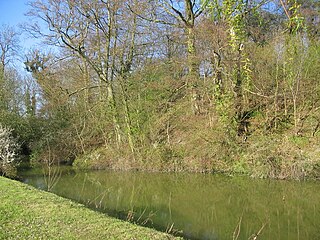
Anstey Castle was in the village of Anstey, Hertfordshire. It was a 12th-century stone motte and bailey fortress that, according to tradition, was founded by Eustace II, Count of Boulogne. It was either him, or one of his immediate progeny who established the first earthwork castle here. The castle had most probably been in existence for some time when the estate was acquired by Geoffrey de Mandeville, for he sought to strengthen his estate in the surrounding valley. It passed into the hands of the de Anstey family in the middle of the 12th century and was strengthened during the First Barons' War of 1215–1216 by Nicholas de Anstey, an opponent of King John, fighting for the barons. After the war ended de Anstey was commanded in 1218 to destroy the castle, with only those parts to remain that had been built before the war. The material from this demolition was supposed to be used in order to repair the nearby church, therefore the crest and shield from the castle feature in the church graffiti.
William Cragh was a medieval Welsh warrior and supporter of Rhys ap Maredudd, lord of the lands of Ystrad Tywi, in his rebellion against King Edward I of England. Captured in 1290 by the son of William de Briouze, the Cambro-Norman Lord of Gower, he was tried and found guilty of having killed thirteen men. Cragh was hanged just outside Swansea within sight of de Briouze's Swansea Castle, twice, as the gallows collapsed during his first hanging. Lady Mary de Briouze interceded on Cragh's behalf and prayed to the deceased Bishop of Hereford, Thomas de Cantilupe, requesting him to ask God to bring Cragh back from the dead. Cragh began to show signs of life the day after his execution and over the subsequent few weeks made a full recovery, living at least another eighteen years.

The Davidian Revolution is a name given by many scholars to the changes which took place in the Kingdom of Scotland during the reign of David I (1124–1153). These included his foundation of burghs, implementation of the ideals of Gregorian Reform, foundation of monasteries, Normanization of the Scottish government, and the introduction of feudalism through immigrant Norman and Anglo-Norman knights.
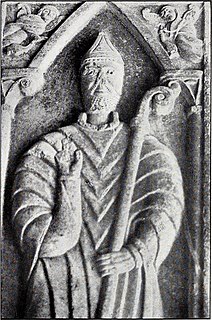
Bartholomew Iscanus was a medieval Bishop of Exeter. He came from Normandy and after being a clerk of the Archbishop of Canterbury, was made Archdeacon of Exeter in 1155. He became bishop of Exeter in 1161. He was known as having excellence in canon law and theology and during his time as bishop visited all the parishes in the diocese to investigate how well-managed they were.
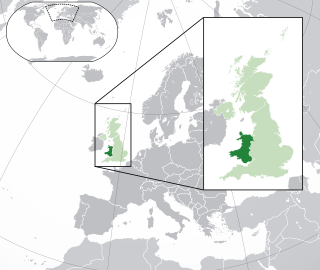
The history of the Jews in Wales begins in the 13th century. However, shortly after the English conquest of Wales, Edward I issued the 1290 Edict of Expulsion expelling the Jews from England. From then until the formal return of the Jews to England in 1655, there is only one mention of Jews on Welsh soil.

England in the Late Middle Ages concerns the history of England during the Late Middle Ages, from the thirteenth century, the end of the Angevins, and the accession of Henry III – considered by many to mark the start of the Plantagenet dynasty – until the accession to the throne of the Tudor dynasty in 1485, which is often taken as the most convenient marker for the end of the Middle Ages and the start of the English Renaissance and early modern Britain.
Æbbe was a saint venerated in medieval Oxfordshire. St Ebbe's church in the southern English city of Oxford had been verifiably dedicated to the saint by 1091. It is believed that she represents a rare southern expression of the cult of the Northumbrian abbess and saint, Æbbe of Coldingham, to whom the church at Shelswell, also in Oxfordshire, was dedicated.
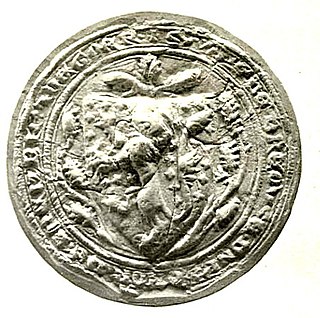
William de Braose was the second Baron Braose, as well as Lord of Gower and Lord of Bramber. He was held as a hostage after being captured in 1264 during the Second Barons' War and records of some of his childhood expenses survive from his time as a hostage. He first entered royal service in 1286 and, in 1291, he succeeded his father as baron. He continued in royal military service, serving in Scotland as well as in Wales. Protracted disputes over his lands embroiled him throughout his life and at the end of his life helped spark a revolt against King Edward II of England's favourites, the Despensers. He married twice, and his heirs were his daughter Aline and his grandson John de Bohun.
A clas was a native Christian church in early medieval Wales. Unlike later Norman monasteries, which were made up of a main religious building supported by several smaller buildings, such as cloisters and kitchens, a clas was normally a single building. The building was run by a community of clergy and headed by an abod. Clasau were autonomous and were administered locally.
Robert of Cricklade was a medieval English writer and prior of St Frideswide's Priory in Oxford. He was a native of Cricklade and taught before becoming a cleric. He wrote several theological works as well as a lost biography of Thomas Becket, the murdered Archbishop of Canterbury.

The Descriptio Cambriae or Descriptio Kambriae is a geographical and ethnographic treatise on Wales and its people dating from 1193 or 1194. The Descriptio’s author, variously known as Gerald of Wales or as Giraldus Cambrensis, was a prominent churchman of Welsh birth and mixed Norman-Welsh ancestry. It is divided into two books, the first concentrating on the virtues of the Welsh people, and the second on their faults.
Landesausbau describes medieval settlement and cultivation processes in regions of Western Europe that were previously only sparsely populated or uninhabitable. By means of clearing of woods and drainage of wetlands, new agricultural areas and new settlement areas were created.










